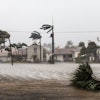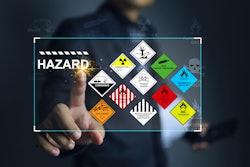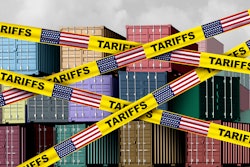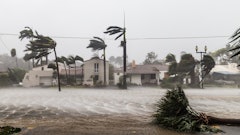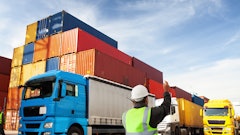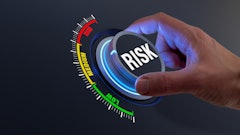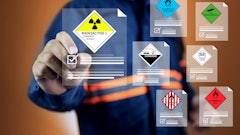
For the better part of the last two decades, supply chain resilience has largely meant learning to survive disruptions. That has meant navigating pandemics, geopolitical conflicts, and labor shortages, as well as one driver that is becoming more consistent, more intense, and more difficult to ignore: extreme weather. However, now businesses want to go beyond just surviving these types of disruptions. They want to thrive.
Recent analysis by Bloomberg Intelligence revealed that the United States spent nearly $1 trillion on disaster recovery and climate-related needs in the year to May 2025, constituting 3% of GDP. As climate risk becomes an economic threat on a national scale, the question facing procurement and sourcing professionals today is no longer if climate will affect their business, but how fast, how deep, and how often those effects will hit. And crucially, whether they’ll be ready to respond, or if they are already falling behind.
The future of procurement intelligence lies in making climate risk visible, quantifiable, and most importantly actionable. That means providing leaders with the foresight to navigate volatility at both ends of the planning spectrum: supply and demand. We’ve seen firsthand how organizations that adopt this proactive approach are transforming uncertainty from a liability into a competitive edge.
From forecasting weather to forecasting markets
Procurement teams have long relied on forecasts — for crop yields, commodity prices, and consumer demand. But recent years have made it clear: these traditional forecasts weren’t built for the volatility we now face. In today’s climate-disrupted economy, supply-side planning must evolve beyond static models and rearview data.
The industry is seeing a shift toward climate-aware forecasting — systems that offer early insight into supply risk, not just for the major commodity players, but for diverse crops and regions historically overlooked by legacy platforms. Whether it's a drought in Brazil, a cold snap in southern Europe, or heat stress during critical growth periods in the U.S. Midwest, planners need to understand not only what might happen, but why, where, and how soon.
The organizations leading this shift are leveraging climate data as a living input — updated frequently, regionally specific, and tailored to business impact. It’s no longer just about forecasting yields. It's about understanding the drivers of disruption and how those will ripple through the supply chain, from production to pricing to delivery.
Crucially, these insights are increasingly informing procurement decisions months ahead of traditional signals — helping leaders rebalance sourcing strategies, anticipate market fluctuations, and build resilience not just at harvest time, but year-round.
Turning climate risks into competitive advantage
Just as important is the demand side of the equation. In a volatile climate, consumer behavior can fluctuate dramatically. Historically, extreme weather was seen as a risk factor. But recent data shows it’s also an opportunity.
Our analysis across tens of thousands of weather events reveals a striking trend: positive sales swings — demand spikes of 10% or more — are occurring twice as often as negative ones. Companies that plan for these moments aren’t just surviving disruptions. They’re thriving, outperforming their peers, and building a reputation around resilience.
This shift requires moving beyond reactive analytics. It means anticipating how events like an extreme weather event (a winter storm, hurricane, etc.) or the early onset of spring will affect consumer needs, and adjusting inventory, staffing, and marketing accordingly. It also means isolating the weather’s impact from broader operational performance. If one store outperforms another, was it execution, or just better weather planning? With the right modeling, leaders can finally separate signal from noise.
A new mandate for procurement leaders
Across food, beverage, and consumer goods industries, weather is increasingly a boardroom topic, but too often treated as background risk. That must change. Climate risks are now a core input to business strategies, not a fringe, separate consideration.
Procurement leaders have already adopted AI for demand sensing and inventory optimization. Now they must do the same for climate. The goal is to build systems that enable risk-adjusted, weather-informed decisions at the asset, category, and market level.
This isn’t theoretical. We’re seeing adoption from global beverage brands, spice traders, and processors who now receive insights 5-15 days ahead of traditional channels. Whether sourcing raw materials or optimizing product mix, the organizations that embed climate foresight into planning are moving faster — and smarter — than those waiting for the storm to pass.
The intelligence is here. Are you using it?
Supply chain leaders are already feeling the pressure of climate variability. What many don’t realize is that their competitors are quietly turning that pressure into advantage — planning earlier, reallocating faster, and treating resilience not as a safeguard, but as a growth lever.
Procurement intelligence in 2025 must do more than look backward. It must anticipate. And that means integrating climate signals into every layer of planning — from the field to the shelf.
The good news is, the shift doesn’t require overhauling your entire system overnight. Many of the organizations leading in this space started with a single use case: improving sourcing visibility for one crop, adjusting demand planning for one region, or piloting climate-informed pricing strategies. From there, they scaled.
If you’re looking to get started, begin by asking:
- Where has extreme weather disrupted your supply chain in the past 12–24 months?
- Which sourcing or demand planning decisions would benefit from earlier climate insight?
- How much competitive ground could you gain simply by seeing disruption — or opportunity — 5-10 days earlier?
The intelligence is here. And the path forward is clear: start small, learn fast, and build climate foresight into the core of your procurement strategy.

